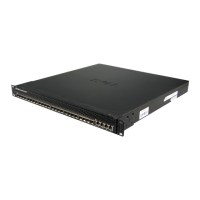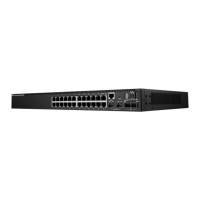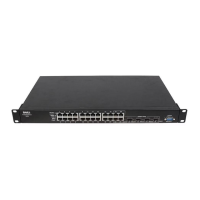790 OSPFv3 Commands
intra-area route as a type 3 summary LSA. Also, an area range can be configured at the edge of
an NSSA to summarize external routes reachable within the NSSA. The range is advertised as a
type 5 external LSA. Use the no form of the command to remove the summary prefix
configuration for routes learned in the specified area.
Syntax
area
areaid
range
ipv6-prefix/prefix-length
{summarylink | nssaexternallink} [advertise | not-
advertise]
no area
areaid
range
ipv6-prefix/prefix-length
{summarylink | nssaexternallink}
•
areaid
— Valid OSPF area identifier.
•
ipv6-prefix/prefix-length
— Valid route prefix.
•
summarylink
— LSDB type
•
nssaexternallink
— LSDB type.
•
advertise
— Allows area range to be advertised.
•
not-advertise
— Suppresses area range from being advertised.
Default Configuration
This command has no default configuration.
Command Mode
Router OSPFv3 Configuration mode.
User Guidelines
The LSDB type must be specified by either summarylink or nssaexternallink, and the
advertising of the area range can be allowed or suppressed.
Example
The following example creates an area range for the area 1 NSSA.
console(config)#ipv6 router ospf
console(config-rtr)#area 1 range 2020:1::1/64 summarylink
area stub
Use the area stub command in Router OSPFv3 Configuration mode to create a stub area for the
specified area ID. A stub area is characterized by the fact that AS External LSAs are not
propagated into the area. Removing AS External LSAs and Summary LSAs can significantly
reduce the link state database of routers within the stub area.

